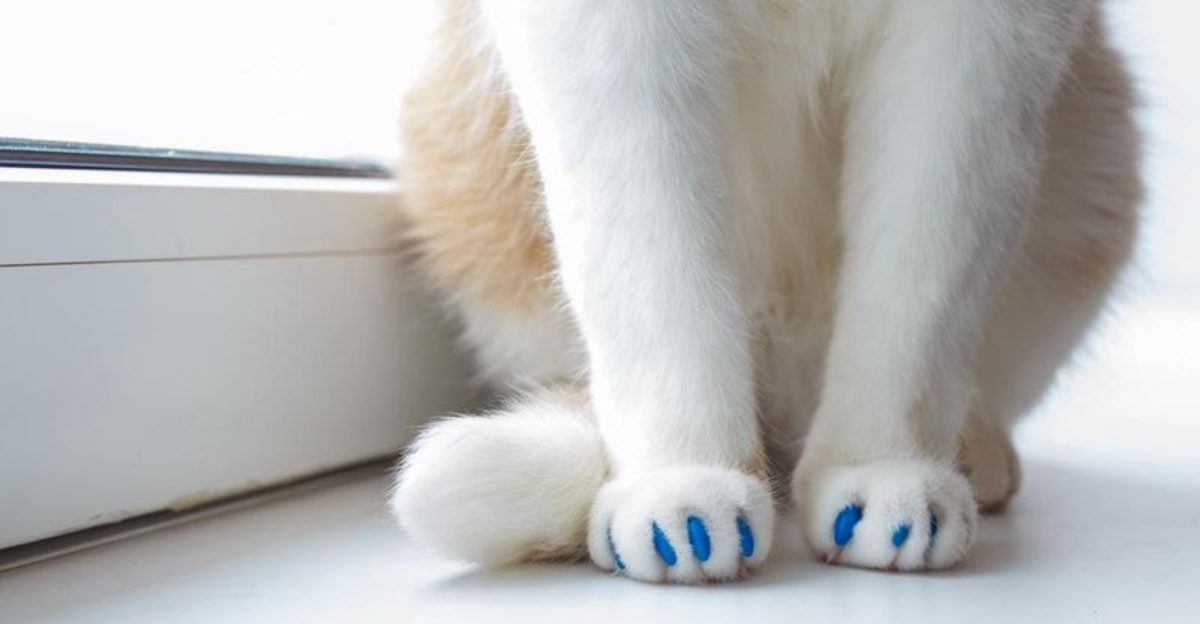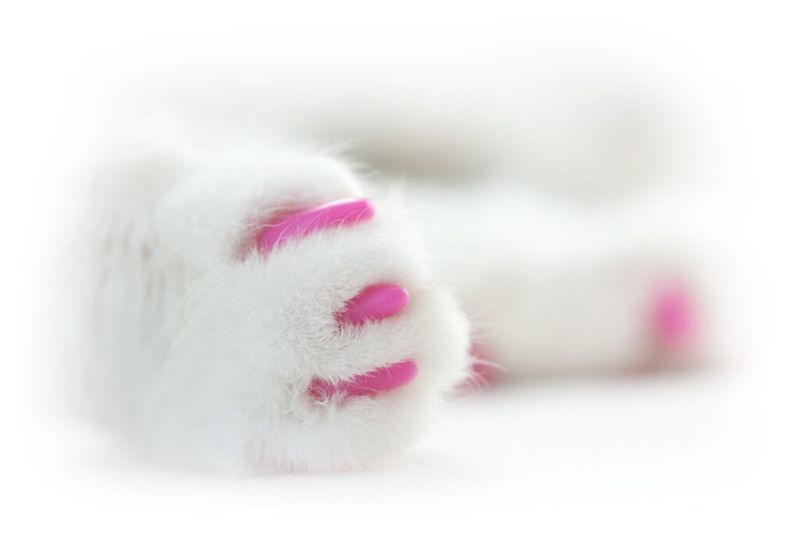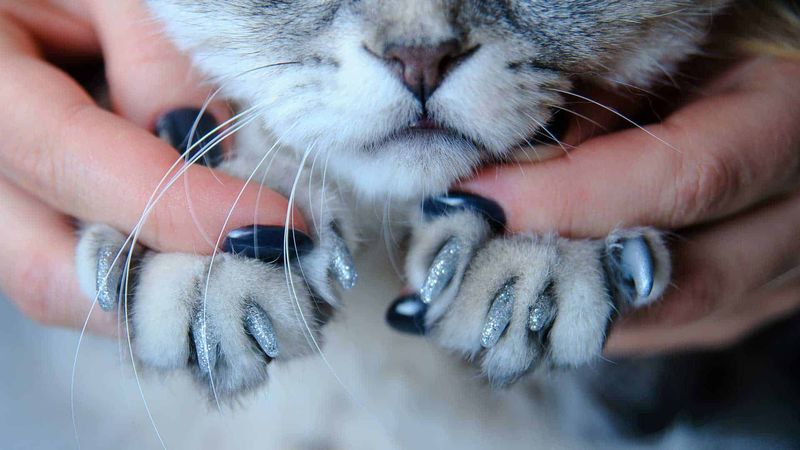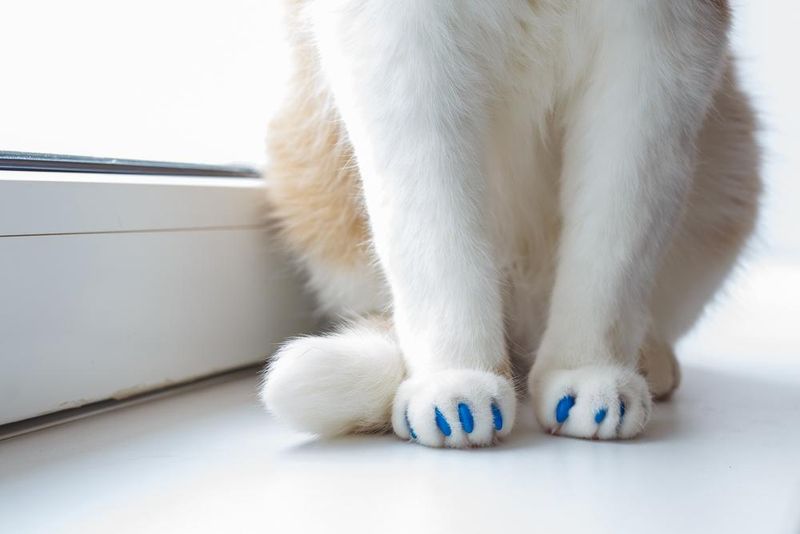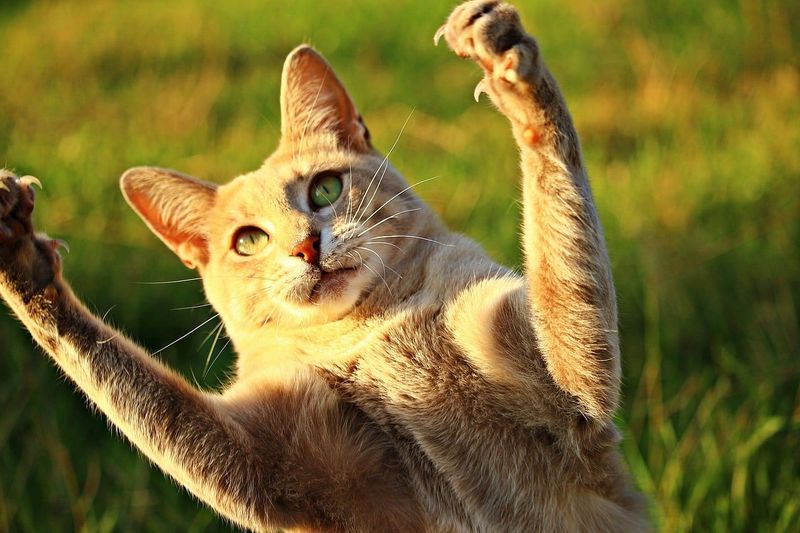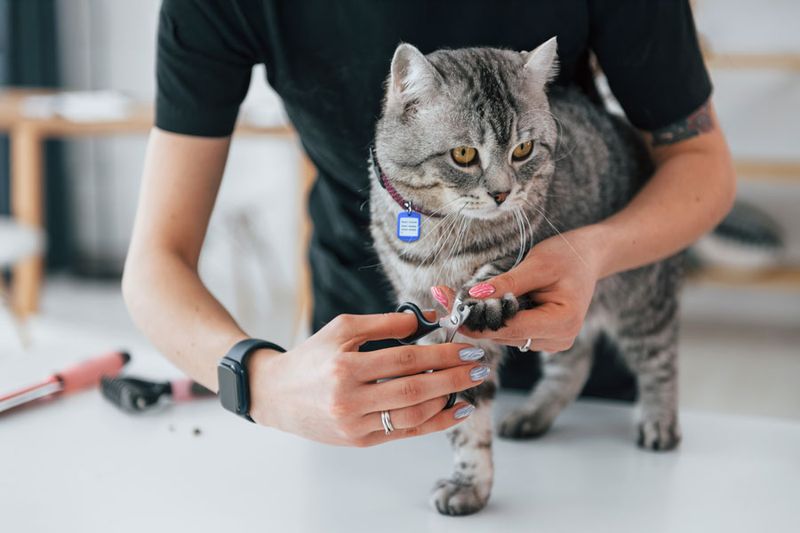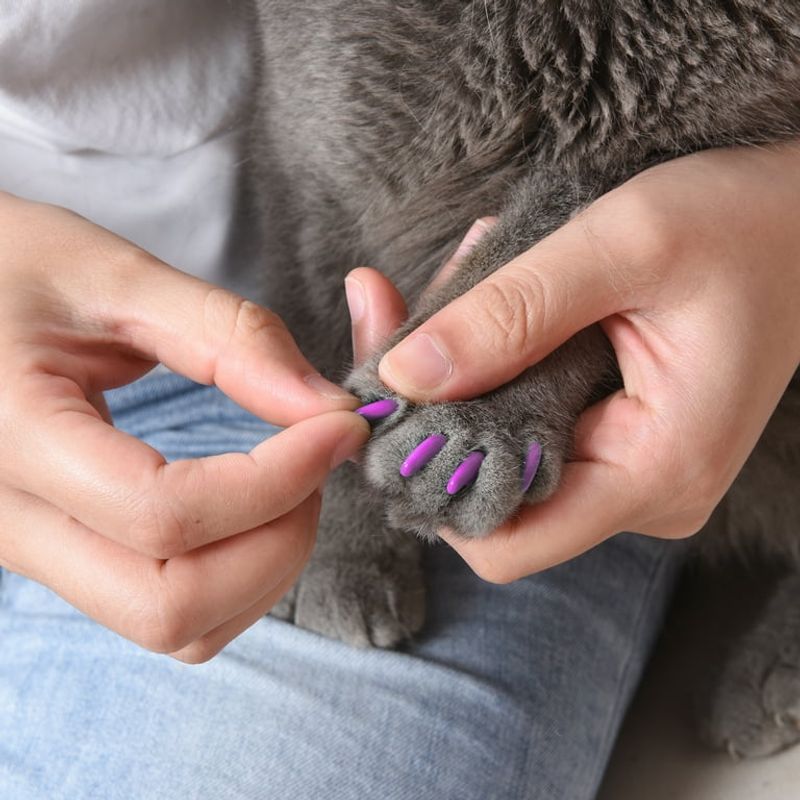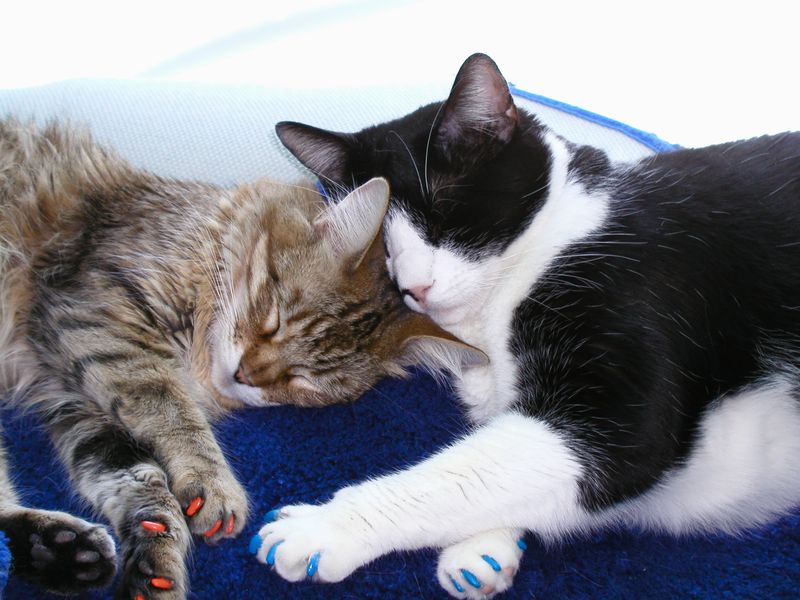📖 Table of Content:
- 1. Cats can’t retract their claws with nail caps on.
- 2. Nail caps are only for declawed cats.
- 3. Cat nail caps are cruel or painful.
- 4. Nail caps prevent cats from climbing, scratching, or playing.
- 5. They’re dangerous if ingested.
- 6. Only aggressive or “bad” cats need nail caps.
- 7. Applying nail caps is too hard or stressful.
Cat nail caps are one of those pet accessories that spark immediate opinions—some love them, others raise an eyebrow. Whether you’re new to the concept or considering them for your own feline companion, chances are you’ve encountered conflicting information online, from pet store clerks, or even fellow cat parents. It’s easy to get overwhelmed when the myths are louder than the facts.
The truth is, nail caps can be a safe, humane, and practical solution for many households, especially those dealing with scratched furniture, sensitive skin, or curious toddlers. Still, because of how misunderstood they are, cat owners often hesitate to give them a try. That’s why separating fact from fiction is so important—not only for your peace of mind but for your cat’s comfort and well-being.
In this article, we’re tackling seven of the most common myths surrounding cat nail caps. Whether you’re skeptical or just curious, you’ll find everything you need to make an informed decision rooted in truth, not rumor. Let’s break it all down myth by myth.
1. Cats can’t retract their claws with nail caps on.
Contrary to popular belief, a cat’s natural claw movement isn’t blocked by nail caps. Cats can still fully retract and extend their claws, as the caps don’t interfere with the muscles or tendons responsible for that motion. These covers are essentially just soft sheaths over the sharp part of the claw. While they reduce the damage a claw can cause, they don’t restrict how your cat uses its paws. You’ll likely still see your cat stretch, knead, and flex as usual—just with a little less scratch. Some owners even report their cats behaving more playfully once the worry of damaging things is removed. The key is proper fit and application.
2. Nail caps are only for declawed cats.
Surprisingly, this myth gets the situation completely backwards. Nail caps are actually intended for cats with their claws intact, especially those whose scratching habits have become problematic. Declawed cats have no use for them, since their claws are surgically removed—often in painful and irreversible procedures that many now consider inhumane. Nail caps serve as a gentle deterrent, preventing furniture destruction or accidental injuries without removing any part of the cat’s anatomy. They offer peace of mind while allowing cats to express normal behaviors like climbing or kneading. For pet parents seeking a compassionate option, nail caps are a go-to solution. In essence, they are the antithesis of declawing.
3. Cat nail caps are cruel or painful.
It’s a common fear that nail caps hurt cats—but that couldn’t be further from reality. Designed from soft, flexible materials like vinyl or silicone, caps are glued only to the claw itself, not to skin or nerve endings. Most cats don’t even notice them once they’re applied properly. Think of them like wearing a comfortable glove—they may feel odd at first but become unnoticeable with time. Veterinarians widely consider nail caps a safe and humane alternative to painful declawing. If a cat seems distressed, it’s often a matter of incorrect sizing or a poor fit. When applied correctly, nail caps are no more cruel than clipping your cat’s nails.
4. Nail caps prevent cats from climbing, scratching, or playing.
Naturally active and curious, cats are still very capable of enjoying life with nail caps in place. Their claws remain fully functional, just less sharp—which is often the whole point. Whether it’s scratching a post, climbing their cat tree, or playfully swatting at a toy, capped claws won’t hold them back. In fact, many cats barely react to the change once they adjust. It’s important to note that scratching is about marking territory and stretching muscles, not just sharpening claws. Nail caps allow the motion without the destruction. So while your sofa might breathe a sigh of relief, your cat won’t miss out on any fun.
5. They’re dangerous if ingested.
At first glance, it’s understandable to worry about a cat swallowing something like a nail cap. However, these tiny covers are made from non-toxic materials that are generally safe if ingested. If a cap comes loose and gets swallowed, it typically passes through the digestive system without issue. Persistent chewing or biting at the caps, though, can be a sign of discomfort or misfit. As with any product, monitoring your pet initially is key to ensuring safety. In rare cases of chronic ingestion or digestive sensitivity, your vet can offer advice or alternatives. But overall, they’re about as risky as a swallowed piece of kibble.
6. Only aggressive or “bad” cats need nail caps.
Nothing could be further from the truth—nail caps aren’t about punishing a “bad” cat but about preventing unintended damage. Even the sweetest, most loving feline can accidentally scratch a child or ruin a new couch. For multi-pet households or those with seniors and babies, they’re often just a precaution. Many cats are simply enthusiastic scratchers, and that’s not a flaw—it’s instinct. Nail caps help balance that natural behavior with the needs of a shared home. They’re not a sign of failure but of thoughtful, proactive pet care. In fact, some therapy and show cats wear them for just that reason.
7. Applying nail caps is too hard or stressful.
Many cat owners are surprised at how quickly they get the hang of applying nail caps. The process is similar to clipping your cat’s nails: trim, apply a small amount of adhesive, and slide the cap on. It usually takes no more than 20 minutes once you’re used to it. For the first few tries, it can help to have a second pair of hands or to go slowly over a few sessions. There are also vets and groomers who will do the application for you, often at a low cost. After the learning curve, most owners find it no more difficult than a basic grooming task. Practice, patience, and treats go a long way.
